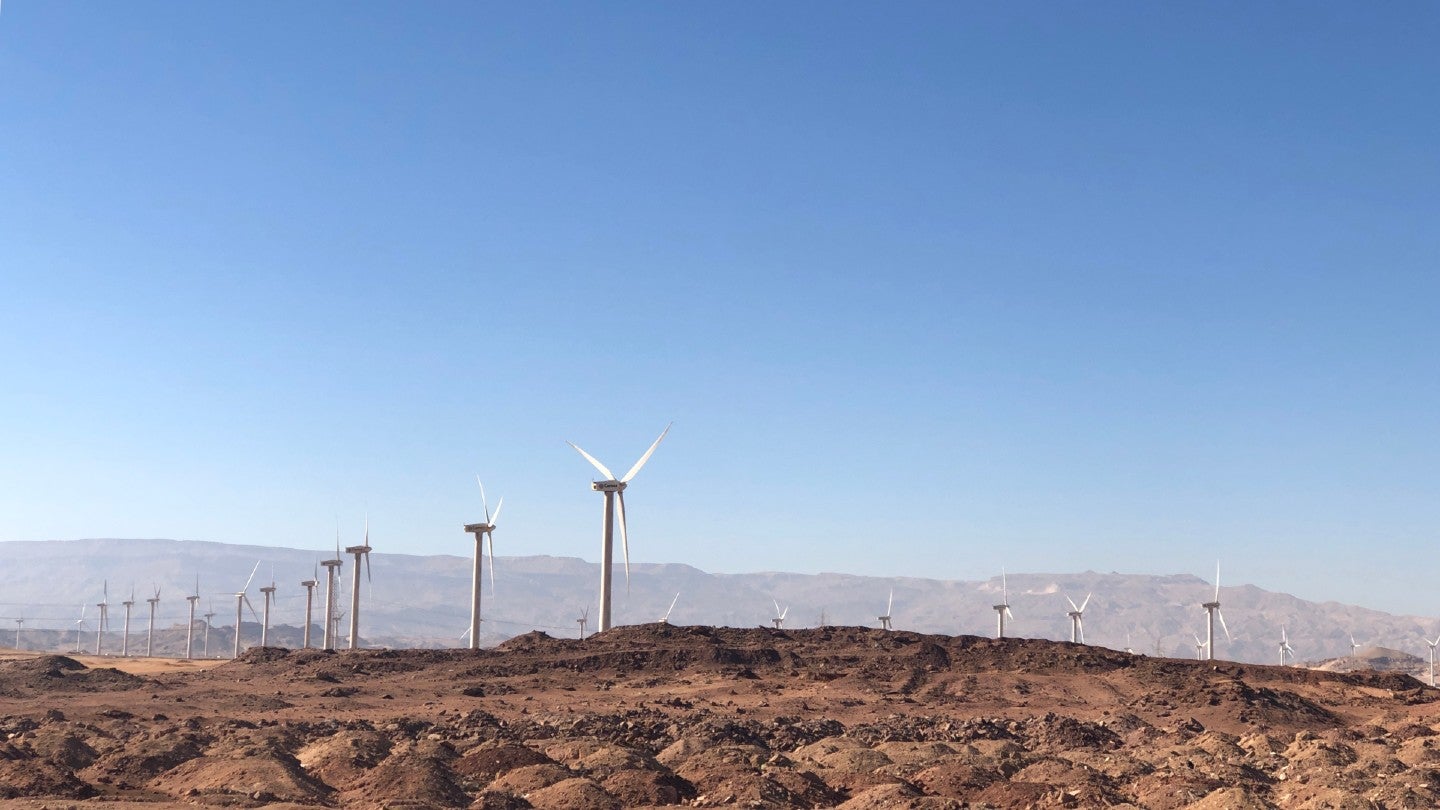
The Egyptian government has signed a $1.5bn wind energy deal with Saudi-led consortium ACWA Power.
The agreement entails a 1.1GW wind energy project in the Gulf of Suez and Jabal El Zayt areas, Egypt’s cabinet office said today (10 January).
The project will be designed to use the latest wind turbine technologies, with a height of around 220m, making them the highest in the Gulf of Suez region. The wind energy project is expected to reduce 2.4 million tonnes of carbon dioxide emissions annually, as well as provide 6,000 direct and indirect job opportunities.
News about the investment came as the Egyptian economy is reeling back from global economic shocks caused by the Covid-19 pandemic and Russia’s invasion of Ukraine in February 2022. According to the US Department of State, FDI inflows for 2021 were $5.1bn, $0.4bn lower than in 2020.
Despite this, government officials have tried to improve the country’s investment climate and image, adopting several regulatory laws and hosting COP27 in November 2022, which reunited more than 92 heads of state and an estimated 35,000 representatives, or delegates, of 190 countries.
For investors in the region, the country’s stock exchange announced plans to launch an Islamic index in cooperation with S&P by November.

US Tariffs are shifting - will you react or anticipate?
Don’t let policy changes catch you off guard. Stay proactive with real-time data and expert analysis.
By GlobalDataIn December, Egypt signed an investment deal worth more than $4bn with Saudi-led consortium ACWA Power. The project includes two phases, the first of which entails building a green hydrogen project with a capacity of 600,000 tonnes of green ammonia per year.
The green ammonia project will be powered by wind and solar plants. The second phase is expected to reach a potential capacity of two million annual tonnes.



